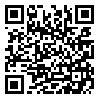Volume 16, Issue 86 (2019)
FSCT 2019, 16(86): 373-385 |
Back to browse issues page
Download citation:
BibTeX | RIS | EndNote | Medlars | ProCite | Reference Manager | RefWorks
Send citation to:



BibTeX | RIS | EndNote | Medlars | ProCite | Reference Manager | RefWorks
Send citation to:
talebi A, Mohtarami F, Pirsa S. The Effect of Carrot Pomace Powder on Physicochemical,Textural and, Sensory Properties ofGluten Free Bread. FSCT 2019; 16 (86) :373-385
URL: http://fsct.modares.ac.ir/article-7-26874-en.html
URL: http://fsct.modares.ac.ir/article-7-26874-en.html
1- MSc graduated
2- faculty of Urmia university , mohtarami.f@gmail.com
3- faculty Urmia university
2- faculty of Urmia university , mohtarami.f@gmail.com
3- faculty Urmia university
Abstract: (2869 Views)
Carrot Pomace Powder is one of the wastes that will be obtained during carrot processing so because of desired nutritional composition (especially fiber and salts); it can be used to increase the nutritional value of gluten-free bread. The purpose of this study was to investigate the effect of CPP(0-30%) on the physico-chemical, textural and sensory properties of gluten free bread based on the replacement of gluten-free flours(chickpea flour, Rice flour and corn starch) for celiac diseases. The results showed that the water activity, moisture, ash, a* value, fiber, protein and antioxidant capacity of samples containing CPP was significantly higher than the controlones(P<0.05). Increasing of CPP decreased carbohydrate, calorie, L* value, specific volume and fat of gluten-free bread samples. With replacement of CPP in bread formulation, cohesiveness increased but firmness, springiness, gumminess, chewiness and resilience of samples decreased. According to the sensory evaluation, substitution of CPP up to 30% increased the overall acceptance of samples. Generally the results showed that the sample containing 30% CPP had better quality than others, and CPP is suitable factor to increase the nutritional value of gluten-free bread.
Article Type: Original Research |
Subject:
Enriching food
Received: 2018/11/5 | Accepted: 2019/03/2 | Published: 2019/04/15
Received: 2018/11/5 | Accepted: 2019/03/2 | Published: 2019/04/15
Send email to the article author
| Rights and permissions | |
 |
This work is licensed under a Creative Commons Attribution-NonCommercial 4.0 International License. |






